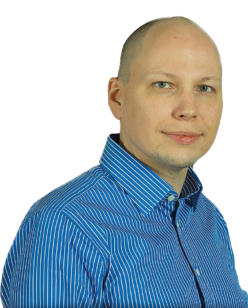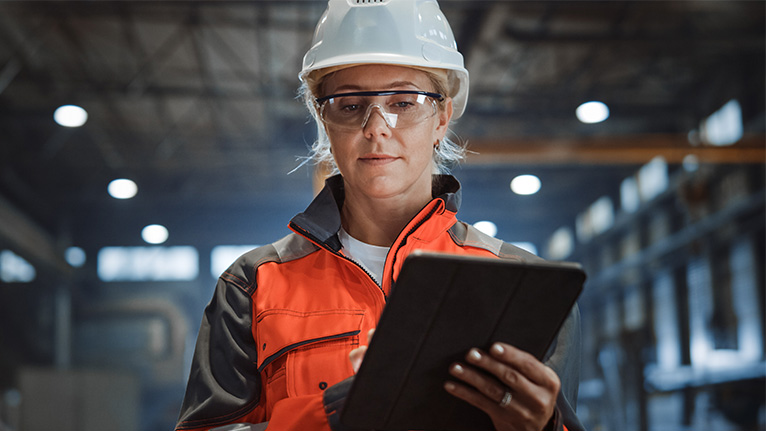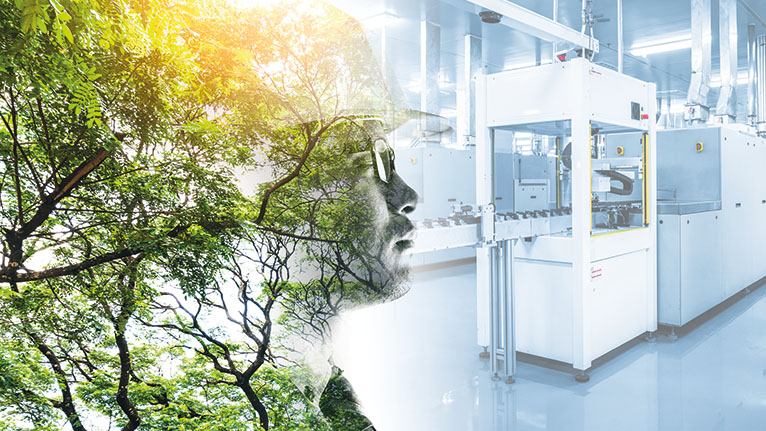June 5, 2023 | Reading time: approx. 4 minutes | The interview was conducted by Christin Senftleben
The declared goal of the sustainability agenda of manufacturing companies often refers to reducing CO₂ emissions. Does IT still play too small a role in sustainability strategies?
Sven Rotzsche: Decisions on IT support are usually made on the basis of cost-benefit considerations - in general, that has never been any different. However, there is additional pressure on companies due to the shortage of skilled workers and the rapidly changing market. IT systems are supposed to provide optimum support for core processes, and as complexity increases, they also have to take on more and more tasks. In addition, IT systems age much faster than the assets and the associated maintenance requirements are often ignored.
Sustainability therefore refers in the considerations rather to how systems can also provide their benefits in the long term. This includes topics such as interoperability/integrability, IT security, maintainability/adaptability, stability, knowledge preservation, and usability. It is important to keep in mind that these are moving targets. Overfulfillment of requirements yesterday will be a deficiency tomorrow. In our view, there is a need to be able to react to changing conditions with one's IT.
In practice, it has not been accepted that a single software solution offers all these aspects permanently and is used for this purpose (e.g. SAP). These all-in-one concepts often fail in penetration because they simply lack the know-how and manpower to achieve a high level of adaptation. A very natural solution path is to use a variety of specialized niche products that collaborate with each other.
However, a multitude of systems again has its own challenges, primarily interoperability / integrability.
This is precisely where sustainable IT architecture comes in. It is about connecting data silos and ensuring the flow of information.
In sum, this creates opportunities to monitor the totality of data on production processes and use it for optimization. As a basis for optimizing material and energy consumption, an end-to-end data flow is a necessary step.
Of course, these decisions around a possible target architecture tend to be driven by monetary considerations. How much effort will it cost to integrate another tool? How much effort do I expend to collect controlling data? How much data do I want to collect and store permanently? How long do I want to store the data? Can I gain an advantage with cloud and what about security?
Conclusion: IT architectures cannot make their own contribution to reducing CO₂ emissions on their own. But they are an important tool for empowering decision-makers to identify and track action.

"Sustainable IT architectures are about connecting data silos and ensuring the flow of information. In sum, this results in opportunities to monitor the totality of data on production processes and use it for optimization. As a basis for optimizing material and energy consumption, a continuous data flow is a necessary step."
Sven Rotzsche
Head of Industrial IoT Solutions | iSAX
Companies are unsure how to design IT architecture sustainably. Where to start?
Sven Rotzsche: A good indication of where to start is to look for increased time expenditure. Whenever data has to be painstakingly compiled so that evaluations can subsequently be made, this is a signal for a need for optimization.
The systematic recording of material and energy consumption as well as associated results/rejects is another possible entry point. Data is often obtained from different sources, and harmonization and consolidation can make evaluation much easier.
How can iSAX help establish a more sustainable IT architecture?
Sven Rotzsche: It usually starts with a joint workshop in which we determine the relevant system requirements with the customer. We get to the bottom of what works in practice and what does not. Where is there a need for support? What is the goal?
Based on concrete use cases, we develop conditions for a possible solution architecture. This is based on what the customer really needs and what can be implemented sustainably on the basis of best practices. We provide the customer with a sound basis for decision-making and concrete implementation recommendations for the customer's IT concept. We provide independent advice that is open to all technologies. If the customer wishes, we also support the implementation of the use cases.
Stay up to date – subscribe to our newsletter now
Use the potential of digitalization to your advantage

Smaller batch sizes, increasing competitive pressure, sustainability as a relevant premise: The challenges to modern production demand a high degree of flexibility from companies. Meet them with sustainable digitalization.
Worker guidance for more sustainability in production

More sustainability in production can be achieved in various ways. One of them: the use of a worker guidance system. We show you how to save resources, secure knowledge and optimize processes with our system weasl.
